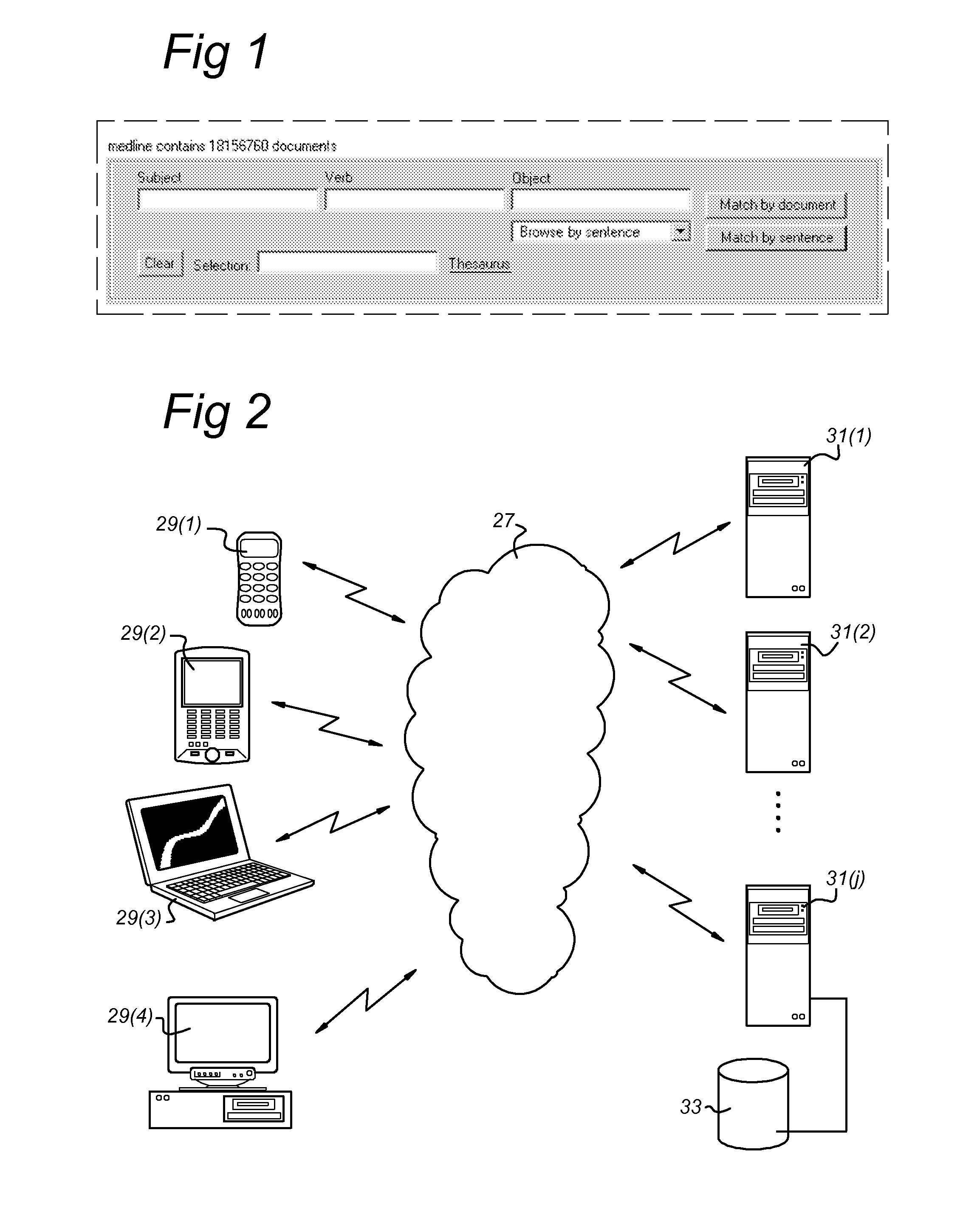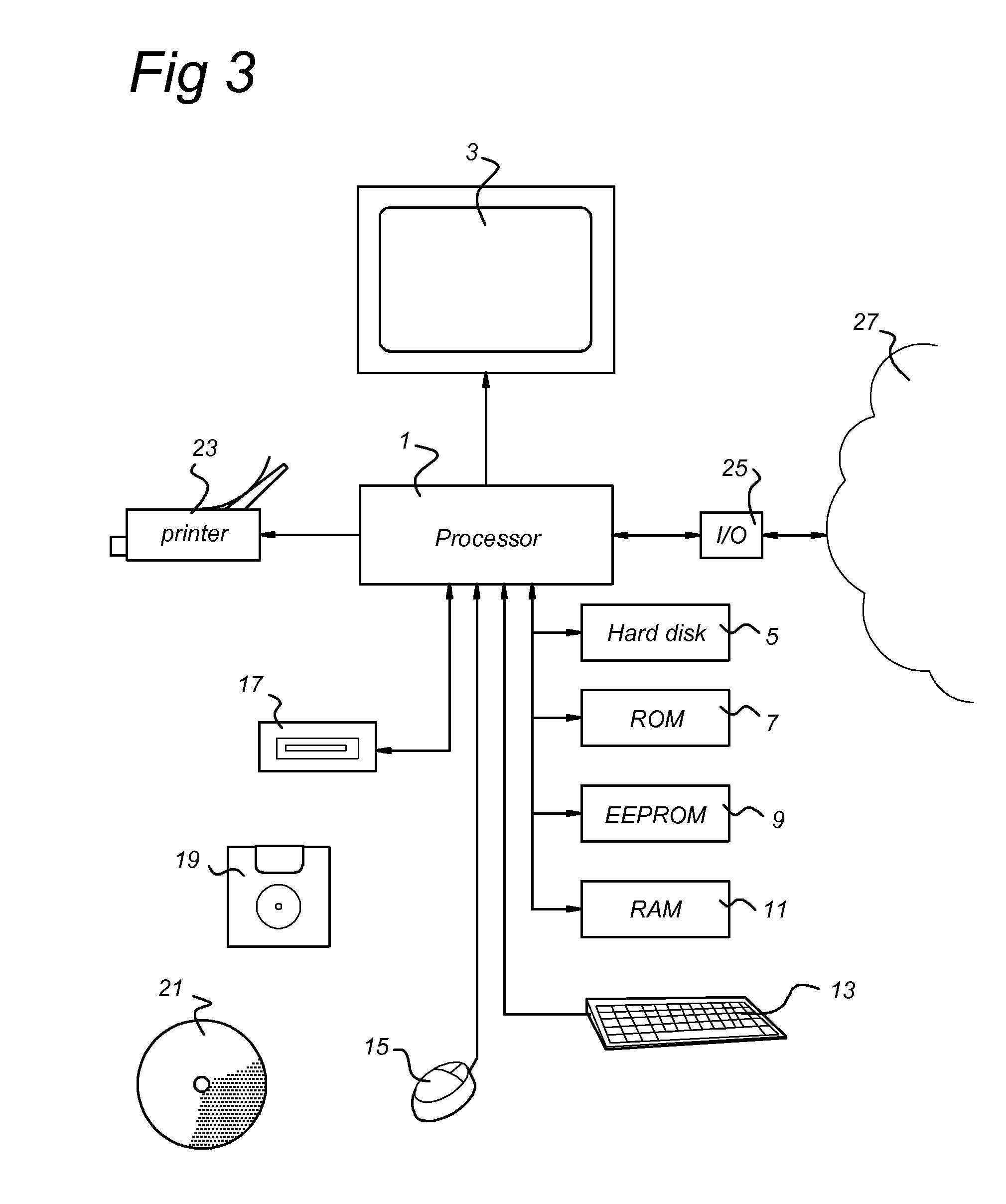User interface for querying dependency relations between textual data elements in a memory
a textual data element and user interface technology, applied in the field of computer arrangement user interface, can solve the problems of not being able to provide all useful feedback from the index, not being able to provide a more fine-grained way of searching, not being able to give an incomplete sentence, etc., and achieve the effect of convenient and quick respons
- Summary
- Abstract
- Description
- Claims
- Application Information
AI Technical Summary
Benefits of technology
Problems solved by technology
Method used
Image
Examples
first embodiment
[0111]In a first embodiment, such an action is implemented by the program to allow the user to drag the cursor with mouse 15 from a position inside the box to another position over one of its sides, for instance by keeping the left mouse button pressed while moving the cursor across that side. This process is called pulling (on) that side of the box.
[0112]An action on a different side of the box may mean a different instruction to the processor 1. For instance, as shown in FIG. 5, the box has four different sides and performing an action on the sides may be converted by the computer arrangement in the following instructions:[0113]acting on the right side=instruction to add a box that functions as a modifier to the present box, meaning that the added box will be automatically connected to the box already present on the display by an arrow, where the arrow is directed from the already present box to the new box,[0114]acting on left side=instruction to add a box that functions as a hea...
second embodiment
[0119]In a second embodiment the display is a touch screen monitor that receives instructions from a user via a finger touching and or moving over the display 3. Then, the user may activate a box by touching the box on the display 3 and may perform the action as mentioned above by shifting a finger from the inside of the box to the outside over the side concerned. Alternatively, the user may perform the action on the side concerned by simply pushing with a finger one or more times on a tab shown on the touch screen, or on the location of the touch screen where the side is shown. Instead of a finger, the user may be allowed to use any other suitable means to operate the touch screen, including but not limited to any pin or stylus shaped device.
[0120]This enables, for instance, keyboardless mobile search applications that can be carried out by pda's and mobile phones.
[0121]The touch screen may be arranged to show a virtual keyboard with keys that can be touched by a user, for instance...
third embodiment
[0122]In a third embodiment, as shown in FIG. 6A, the box may have tabs along its sides, and the actions as defined above may be implemented as clicking on a tab at a specific side of the box, which may be appropriately marked:[0123]clicking on the right side tab=instruction to add a box that functions as a modifier to the present box, meaning that the added box will be automatically connected to the box already present on the display by an arrow, where the arrow is directed from the already present box to the new box,[0124]clicking on the left side tab=instruction to add a box that functions as a head to the present box, meaning that the added box will be automatically connected to the box already present on the display by an arrow, where the arrow is directed from the new box to the already present box,[0125]clicking on the lower side tab=request for feedback, when performing this action a list of possible heads or modifiers and relations will show up from which the user can make ...
PUM
 Login to View More
Login to View More Abstract
Description
Claims
Application Information
 Login to View More
Login to View More - R&D
- Intellectual Property
- Life Sciences
- Materials
- Tech Scout
- Unparalleled Data Quality
- Higher Quality Content
- 60% Fewer Hallucinations
Browse by: Latest US Patents, China's latest patents, Technical Efficacy Thesaurus, Application Domain, Technology Topic, Popular Technical Reports.
© 2025 PatSnap. All rights reserved.Legal|Privacy policy|Modern Slavery Act Transparency Statement|Sitemap|About US| Contact US: help@patsnap.com



